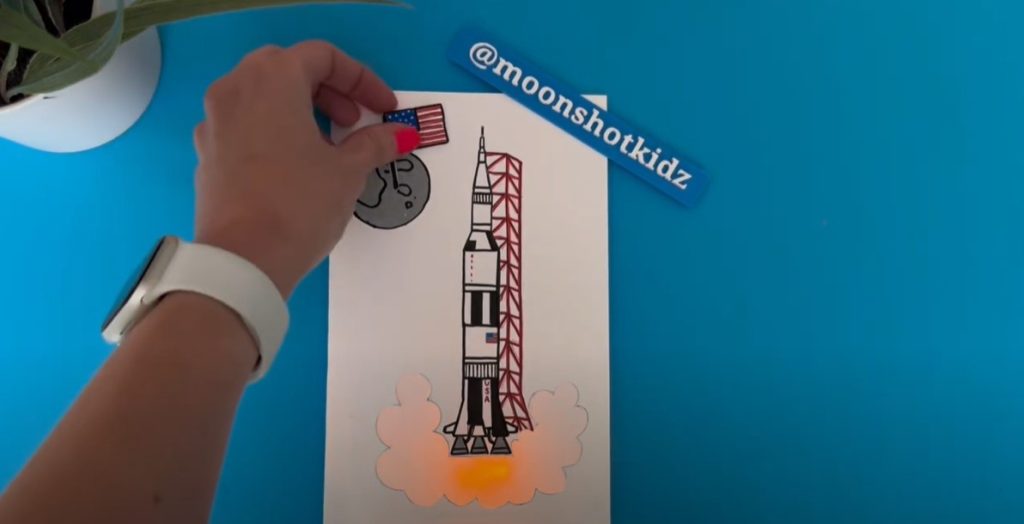The night sky offers a show unlike anything else. In this monthly series, we will explore some of the top viewing experiences for backyard astronomers.
Here are some highlights from NASA’s Skywatching report, as to what you can look forward to observing in the April sky!
April 2 – Antares
The bright star Antares will make an appearance tonight to the right of the waning gibbous Moon, which will rise around 11:33 p.m. CT in the east-southeast.
April 6 – Saturn and Jupiter
This morning, catch Saturn rise in the east-southeast at 3:03 a.m. CT, followed by the Moon (at 3:22 a.m. CT) and Jupiter (at 3:39 a.m. CT). Saturn will appear to the upper left of the waning crescent Moon, with Jupiter farther to the left.
April 15 – Aldebaran
Look above the western horizon this evening at 7:46 p.m. CT to observe the bright star Aldebaran, which will appear to the left of the waxing crescent Moon.
April 16 – Mars
Take the opportunity to see Mars this evening around 7:47 p.m. CT, when the planet appears above the waxing crescent Moon over the western horizon.
April 20 – Venus makes an appearance
This evening marks the first evening to see Venus in the night sky. This bright planet will appear faintly above the horizon in the west-northwest 30 minutes after sunset.
April 21-22 – Regulus
The bright star Regulus makes an appearance Wednesday evening into Thursday morning, where it can be observed to the lower left of the waxing gibbous Moon. Regulus will appear to shift closer to the Moon into the morning, with the star setting at approximately 2:57 a.m. CT in the west-northwest.
April 22 – Annual Lyrid meteor shower
Don’t miss your opportunity to see the annual Lyrid meteor shower! This year, there will only be a short window to catch it (between 3:07 a.m. CT and 3:44 a.m. CT) due to light interference from the Moon.
The Lyrids are pieces of space debris that originate from the comet C/1861 G1 Thatcher. They are one of the oldest known meteor showers, having been observed for over 2,700 years. Their radiant, or point in the sky from which they appear and where they get their name, is in the constellation Lyra. The Lyrids appear to come from the vicinity of one of the brightest stars in the night sky – Vega. Vega is one of the easiest stars to spot, even in light-polluted areas.
Viewing Tips: The Lyrids are best viewed in the Northern Hemisphere during the dark hours (after moonset and before dawn). Find an area well away from city or street lights. Come prepared with a sleeping bag, blanket or lawn chair. Lie flat on your back with your feet facing east and look up, taking in as much of the sky as possible. After about 30 minutes in the dark, your eyes will adapt and you will begin to see meteors. Be patient—the show will last until dawn, so you have plenty of time to catch a glimpse.
April 24 – Mercury joins Venus in the evening sky
Tonight will be the first evening that Mercury will join Venus in the evening sky, appearing just above the horizon in the west-northwest roughly 30 minutes after sunset.
April 25-26 – Spica
See the bright star Spica in the night sky as it makes an appearance to the lower right of the full Moon around 7:58 p.m. CT above the horizon in the east-southeast. Into the morning, Spica will appear below the Moon, which can be observed above the horizon in the west-southwest.
April 26 – Full Moon
Tonight is a full Moon! It will appear opposite the Sun around 10:31 p.m. CT, and will appear full for three days, from Sunday evening through Wednesday morning.
Watch the video below to find out what constellations you can see in April. This video is produced by the Space Telescope Science Institute, home of science operations for the Hubble Space Telescope, in partnership with NASA’s Universe of Learning.
Spot the Station
Watch the International Space Station pass overhead from several thousand worldwide locations. It is the third brightest object in the sky and easy to spot if you know when to look up. Visible to the naked eye, it looks like a fast-moving plane only much higher and traveling thousands of miles an hour faster! Find out when you can spot the station.
For stargazing tips, explore our guide. To learn more information about April 2021 celestial events, visit NASA Solar System Exploration.







